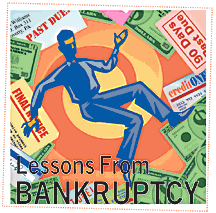
One question that I have heard contractors often ask in seminars is, "How fast can my company safely grow?" An answer is usually given that corresponds to the presenter's own past business experience. However, based upon what we have learned so far regarding return on investment (ROI) planning, we can devise a straightforward answer to this question.
The formula for determining a company's growth potential is found by identifying the company's return on equity (ROE). Remember from our previous discussion that equity is simply the amount of ownership investment in the business by the company owner and outside investors. It does not include any debt. Unlike the ROI formula, which looks at operating income (income before interest expenses and taxes), the ROE formula utilizes net income (income after interest expenses and taxes).

A company with $200,000 in assets and $100,000 in debt would have equity of $100,000. It is similar to home ownership; the equity is the difference between the home's value and the amount of the mortgage (debt) on the house.

Debt Load
If the company maintained no debt load, the equity in the company would be $200,000 and the ROE would drop to 12.5 percent. Theoretically, the use of debt increases the company's exposure to risk (variance in earnings), and therefore equity investors require a higher return on their investment for the additional risk that they are taking on the investment.
Simply put, if 100 percent of the company's net income is reinvested into the company, the company's growth potential equals 25 percent. If 50 percent of the company's net income is paid out to owners, etc., and 50 percent is reinvested into the company, our hypothetical company's potential growth rate would equal 12.5 percent.
This is why in the "booming" 1990s few technology company stocks ever paid out a dividend. They could potentially grow much faster by reinvesting 100 percent of the income back into the company, thereby capturing more market share and increasing profits. This reinvestment and increasing company profits lead to higher stock prices. Putting aside tax issues, investors are now demanding that these companies pay out dividends because their growth has slowed due to the poor economy. The cash is worth more to the investors in their pockets than it is when reinvested in the company's operations.
Next week: If you are aiming to increase your company's sales as the economy picks up, you must understand the power of compounded reinvestment.
Roberts is owner of Roberts Commercial Lending Co. LLC. He provides corporate finance and debt consulting, business loans, and leasing services. He can be reached at 586-716-8329 or CommercialFnnc@aol.com.
Publication date: 04/12/2004

Report Abusive Comment